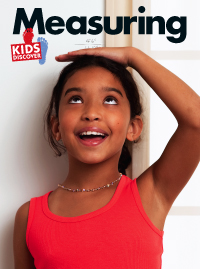 The Burj Khalifa skyscraper in Dubai tops out at 2,722 feet, making it currently the tallest building in the world. That is just over a half-mile up into the clouds, making the Empire State Building (at 1,250 feet) appear absolutely puny by comparison. If you’re considering very ancient structures, the Lighthouse at Alexandria was built in the third century B.C. and topped out somewhere around 400 feet, which was quite the feat for its day.
The Burj Khalifa skyscraper in Dubai tops out at 2,722 feet, making it currently the tallest building in the world. That is just over a half-mile up into the clouds, making the Empire State Building (at 1,250 feet) appear absolutely puny by comparison. If you’re considering very ancient structures, the Lighthouse at Alexandria was built in the third century B.C. and topped out somewhere around 400 feet, which was quite the feat for its day.
How do I know this? I read it on Wikipedia of course, the fountain of all knowledge (for lazy persons such as myself anyway). And I have to imagine that the architects and engineers of the majority of these behemoths had a pretty good idea of how tall they would be before the first stone was laid. That’s why we call them architects and engineers.
So, how tall is that elm tree in your front yard? How about the cell phone tower down the street, the local insurance building, your own roof, the high school gym, or the first of many wind turbines to come? (We have a lot of those here in Kansas.) Have you ever wondered? Have your students ever wondered?
Short of going all Toby Maguire up the side of one of these edifices (edifii?) with a tape measure in hand, there exists a very simple way of calculating within a very close proximity the exact height of nearly anything. And to do so, we really only need the help of that large, bright object in the afternoon sky. (Sun, we need to have a talk.)
Gather up some of your finest students (oh what the heck, bring them all), a tape measure, a stick roughly two or three feet in length (a yardstick will work wonderfully), a small level if you have one, and a calculator, and head for the nearest flag pole, tree, or school structure. It will need to be a fairly cloudless day, so don’t attempt this during the Monsoon season.
Divide duties between your pupils, as in someone to take notes, someone to do the math, someone to do the measuring, etc. Have one of your students place one end of the yardstick on the ground, keeping it as perpendicular to the earth as possible (this is where the level comes into play, and choose a fairly flat surface), and have another student measure the length of the yardstick’s shadow. While this is going on, have another student (or two) measure the length of the shadow of the object (let’s say flagpole) you’re trying to determine the height of. It’s fairly important that these two measurements be taken at exactly the same time as the sun never tends to stay in one spot for very long.
Now it’s a matter of doing the math. Let’s say the shadow of the yardstick is 20 inches, and the shadow of the flagpole is 18 feet, 2 inches (or 218 inches). We know the yardstick is 36 inches high, so divide 36 by 20, and you’ll get a ratio of 1.8. Now take the length of the flagpole’s shadow and multiply it times 1.8, giving you a height of 392.4 inches, or roughly 32 feet, 9 inches.
Should you choose the lazy person’s way (one of my many traits), you can simply wait until the shadow of the yardstick is at 36 inches, then go measure the shadow of the flagpole, giving you a very direct 1:1 ratio. You can also use a ruler to stand in for the tape measure if you choose. Measure the length of one of your student’s shoes (see Twenty Thousand Emmas Under the Sea), have them walk off the distance toe-to-toe, then do the math. (I must confess here and now that I personally am blessed with a pair of Nikes that are exactly 12 inches long, so this is quite an easy concept for me. So there.)
Along those lines, you will get a more accurate reading if the sun is at a 45 degree angle than you would at say, 11:35 in the afternoon. And if you spot a protractor somewhere in your classroom, ask your students to build their own clinometer (or declinometer) to make the process a little faster.
A guy walks into a lumber yard and says “I need a 2×4.” The person behind the counter says “How long do you need it?” The guy says “For at least a few years.”
Teach. Learn. Enjoy!



